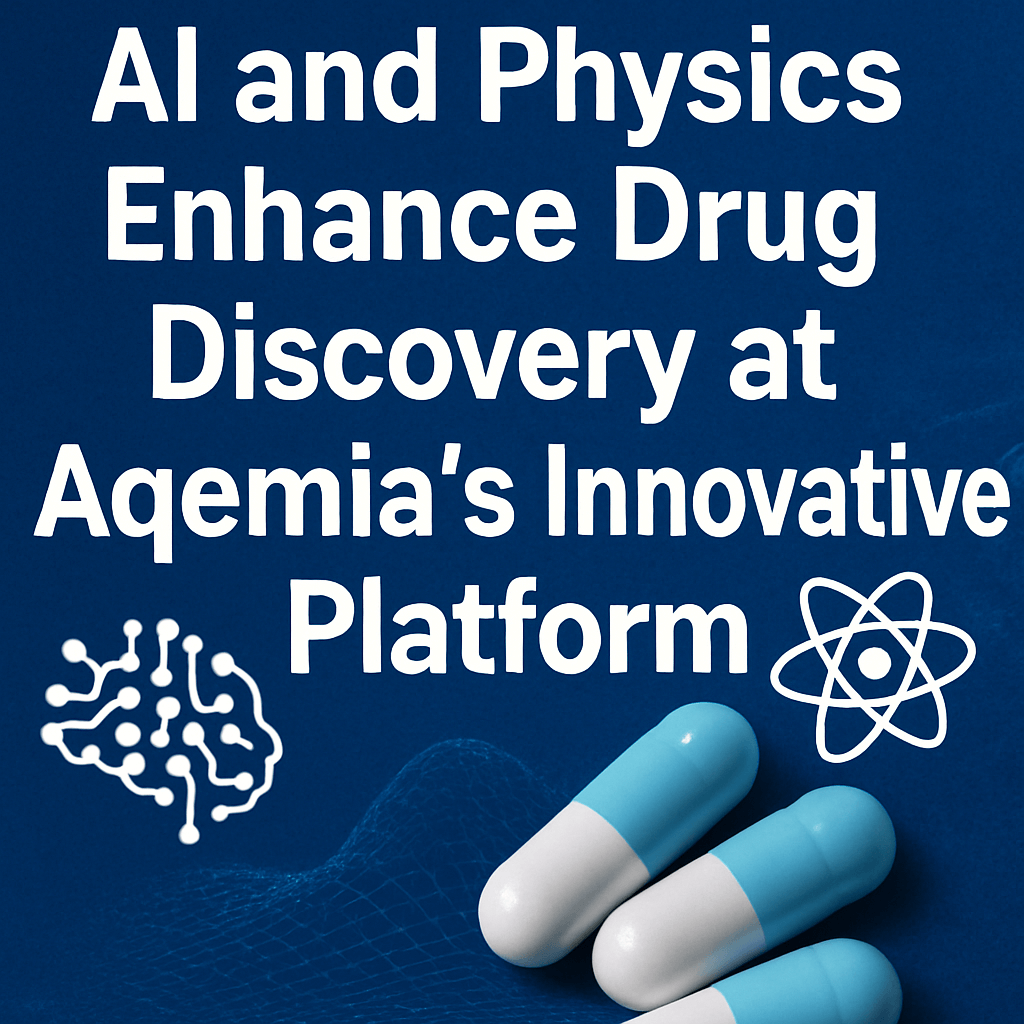AI and Physics Enhance Drug Discovery at Aqemia’s Innovative Platform

The Challenge of Traditional Drug Development
Bringing a novel therapeutic molecule to market typically spans 10 to 15 years and demands substantial capital—often exceeding $2 billion per approved drug. Only 10–20% of candidates entering clinical trials ultimately gain regulatory approval. These long timelines and high attrition rates stem from the empirical nature of early-stage screening, where researchers synthesize and test thousands of compounds in vitro and in vivo before identifying lead candidates.
A Physics-Guided AI Framework
France-based startup Aqemia, founded in 2019 by quantum physicist Maximilien Levesque and former BCG consultant Emmanuelle Martiano, seeks to disrupt this model. By embedding fundamental physics laws directly into advanced AI algorithms, the company aims to predict molecular interactions with unprecedented accuracy and reduce reliance on large experimental datasets.
Integrating Quantum Mechanics and Machine Learning
Most AI-driven drug discovery platforms employ data-hungry deep learning models trained on historical compound libraries. In contrast, Aqemia’s approach:
- Encodes Schrödinger’s equation–derived potentials to model inter-atomic forces.
- Utilizes molecular dynamics simulations accelerated by GPU clusters to sample conformational space.
- Applies free energy perturbation (FEP) and alchemical transformations to estimate binding affinities.
“Instead of feeding the model billions of examples, we feed it the rules of physics,” explained Levesque. “It’s like having a tutor who teaches you concepts rather than making you memorize numbers.”
Training on Physics Constraints
Aqemia’s hybrid framework couples graph neural networks with physics-based energy functions. The pipeline consists of:
- Defining target biology (e.g., receptor structure from AlphaFold predictions).
- Generating initial scaffolds via generative adversarial networks (GANs).
- Refining leads with reinforcement learning under physicochemical constraints (e.g., Lipinski’s rule of five).
- Validating top candidates through in silico docking and FEP calculations.
Partnerships and Pipeline Progress
Since 2021, Aqemia has inked over half-a-dozen collaborations with industry leaders—Sanofi, Servier and Johnson & Johnson. These alliances target oncology indications, including head, neck and lung cancers. Early preclinical data, presented at the recent European Society for Medical Oncology conference, show promising tumor regression in murine models with no detectable off-target toxicity.
Regulatory Path and Clinical Timelines
While Aqemia’s AI platform accelerates molecule generation—potentially cutting discovery time by 30–50%—the clinical development phase remains a bottleneck, typically spanning nine years. The company aims to file Investigational New Drug (IND) applications by late 2026, with first-in-human trials slated for 2027.
Comparative Analysis of AI Platforms in Pharma
Worldwide, over 130 AI–pharma partnerships have emerged since 2021. Key differentiators among leading platforms include:
- Data Requirements: Pure ML models demand extensive annotated libraries; physics-informed models require fewer examples.
- Computational Overhead: Quantum mechanics–based methods incur higher GPU and HPC costs but deliver greater predictive fidelity.
- Integration Flexibility: Platforms that support plug-and-play APIs facilitate quicker adoption in biotech labs.
Regulatory and Ethical Considerations
Embedding AI in drug discovery raises questions about algorithmic transparency, data sovereignty and validation standards. Regulatory bodies such as the European Medicines Agency (EMA) are developing guidance on AI-driven submissions, emphasizing:
- Traceability of model decision pathways.
- Robustness against adversarial inputs.
- Reproducibility of in silico predictions across independent laboratories.
Future Prospects and Investment Landscape
With global AI healthcare funding exceeding $20 billion in 2023, investors are eyeing platforms that demonstrably shorten R&D cycles. Aqemia’s physics-driven approach positions it to capture a segment of the high-value oncology market, projected to reach $300 billion by 2030.
As quantum computing matures, next-generation drug discovery could further leverage qubit-level simulations, potentially ushering in a new era of precision pharmacology.
Read on YieldRadar.info